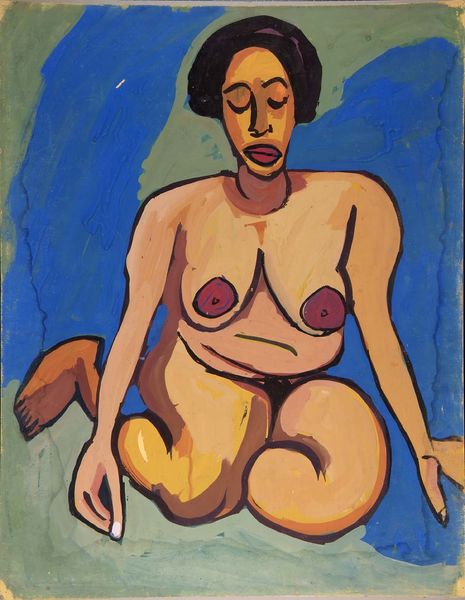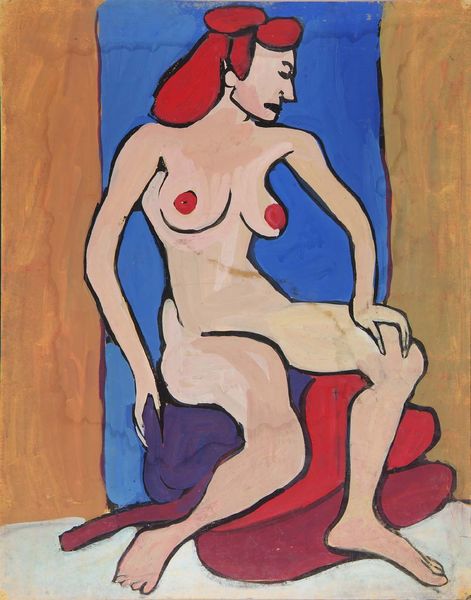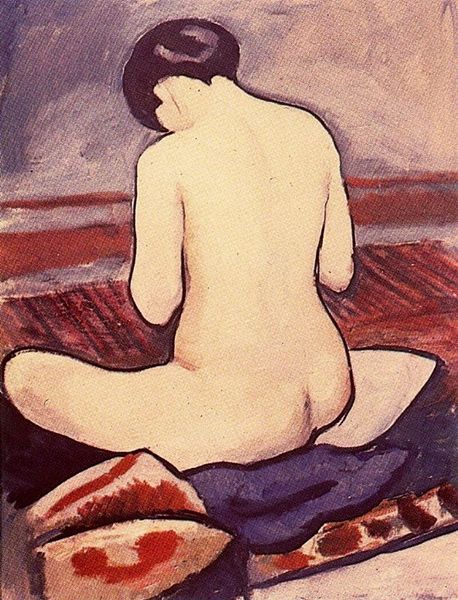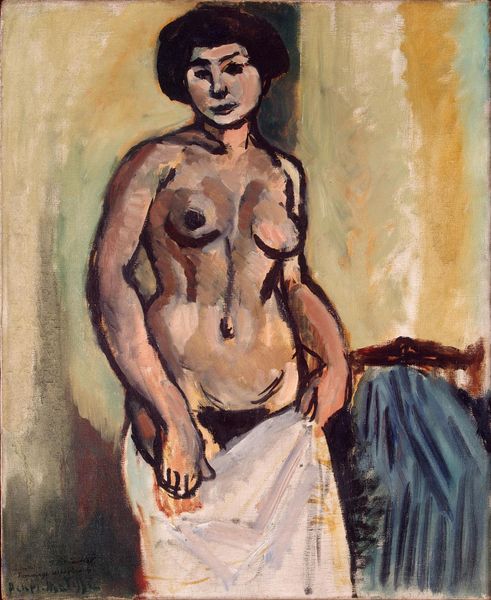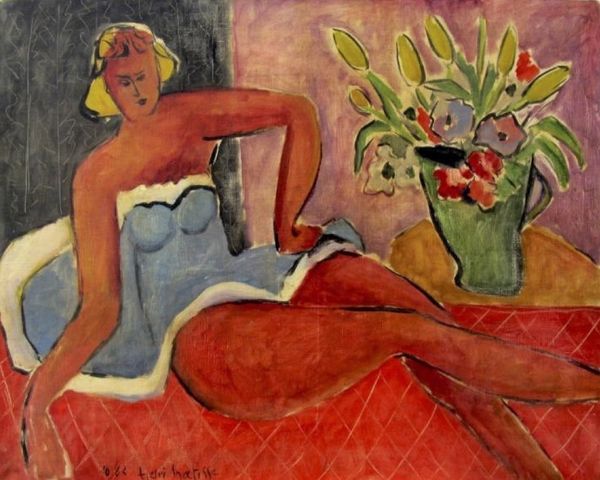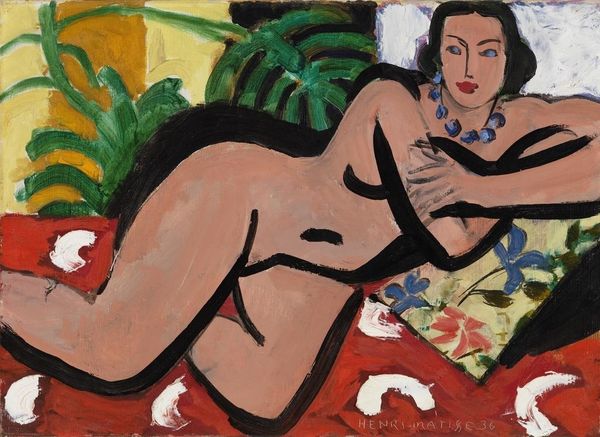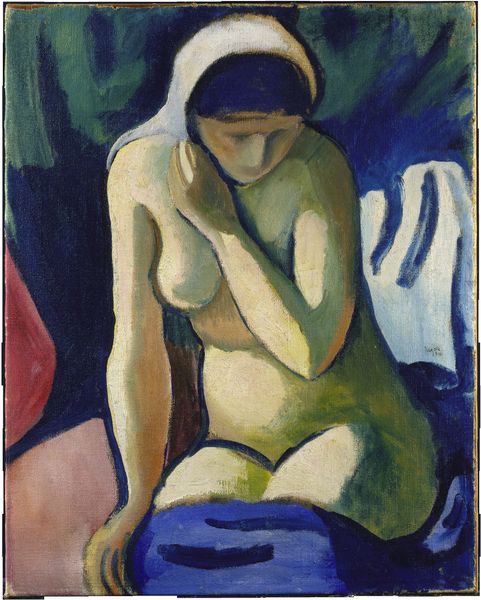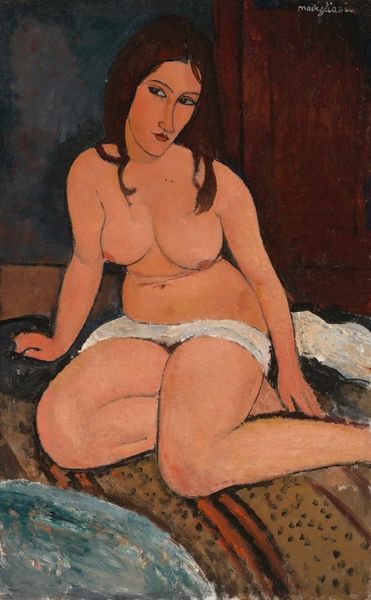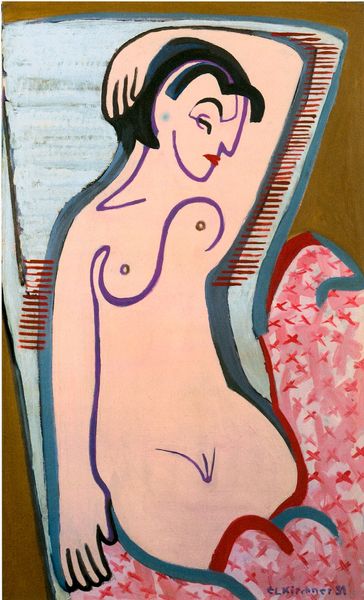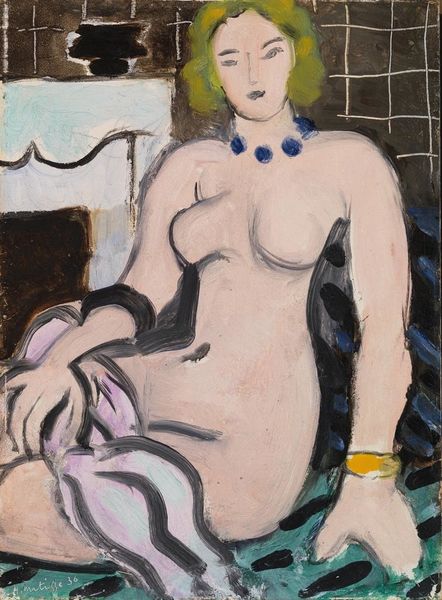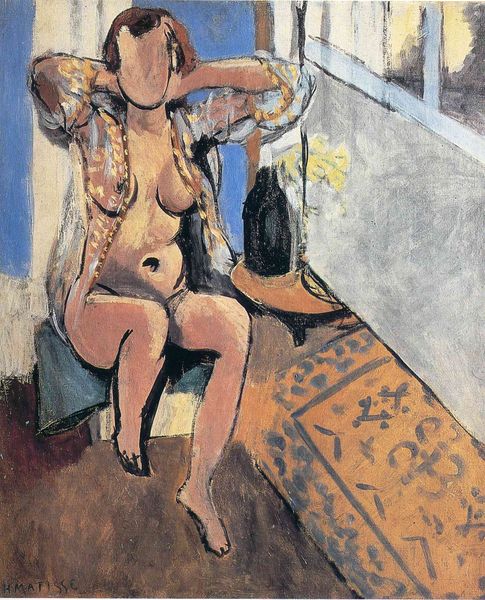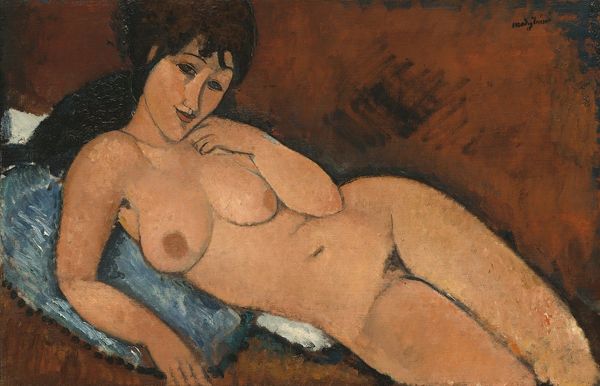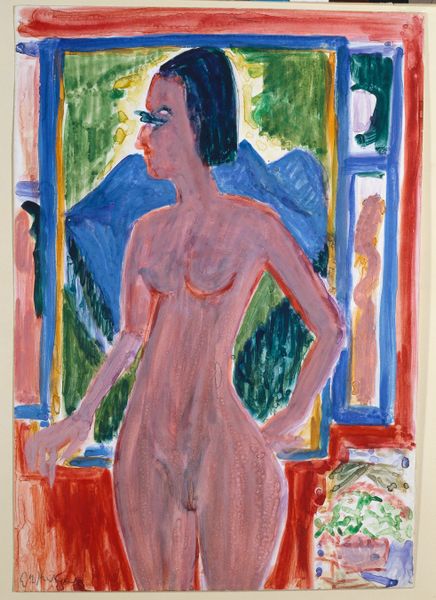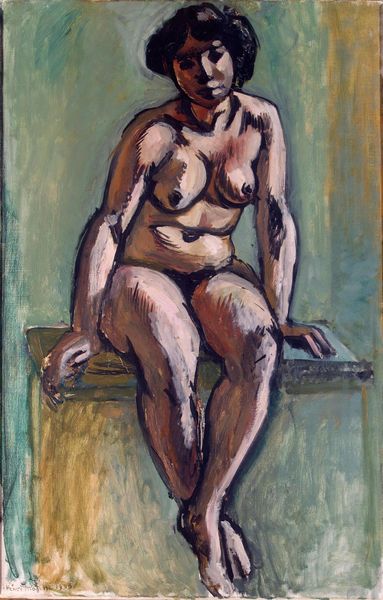
painting, acrylic-paint
#
portrait
#
organic
#
painting
#
caricature
#
harlem-renaissance
#
acrylic-paint
#
figuration
#
acrylic on canvas
#
nude
#
portrait art
Copyright: William H. Johnson,Fair Use
Curator: Stepping up to William H. Johnson's "Seated Female Nude with Flowered Drape" from 1940, one can't help but be struck by its arresting directness. Editor: Directness is right. She's unapologetically there, isn't she? There's a quiet confidence that emanates from this painted woman. I sense a peaceful kind of contemplation. Curator: Indeed. Johnson's flat planes of color and bold lines, almost childlike, reject traditional perspective, opting for an emotional truth, a modern rawness. Think of the simplified forms, the minimal shading—a true break from academic traditions. Editor: It’s fascinating how those stark compositional choices lead the eye directly to her pose and the drape at her legs. It almost reads like an intentional, even aggressive, formalism, in spite of what you call a child-like hand. The drape's repetitive floral design almost acts like a semiotic signifier, pointing to both ideas of femininity and artifice. Curator: Perhaps. The work coincides with Johnson's mature period, where his style leaned into this sort of deliberate simplicity, and was when he started to celebrate his heritage more openly. Editor: How so? It's interesting to contextualize his nude within Harlem Renaissance motifs and, even broader, a Western painting history which had tended to suppress and exoticize women of color. Here, we are getting this stripped-down vision. What is Johnson signaling, intentionally or not? Curator: I think the simplicity isn't a lack of skill, but rather Johnson zeroing in on something essential, reducing form to express both the essence of the subject and, equally important, the Black experience, unadorned. This, by contrast to other images that proliferate, offers dignity and perhaps a more democratic mode of portrayal. Editor: I appreciate the way Johnson is inviting the viewer to see the figure in its most basic and beautiful terms, by simplifying form, as you observed at the opening of this commentary. In its simplicity lies also a profound aesthetic philosophy, which also allows a deeper cultural and representational interrogation of portrait art, its history, and its implications. Curator: Exactly! Johnson’s legacy lies in that very ability to blend modernist aesthetics with heartfelt emotion and the nuanced representation of Black subjects. Editor: A fusion which leaves a lasting mark and creates a vital conversation even today.
Comments
No comments
Be the first to comment and join the conversation on the ultimate creative platform.
